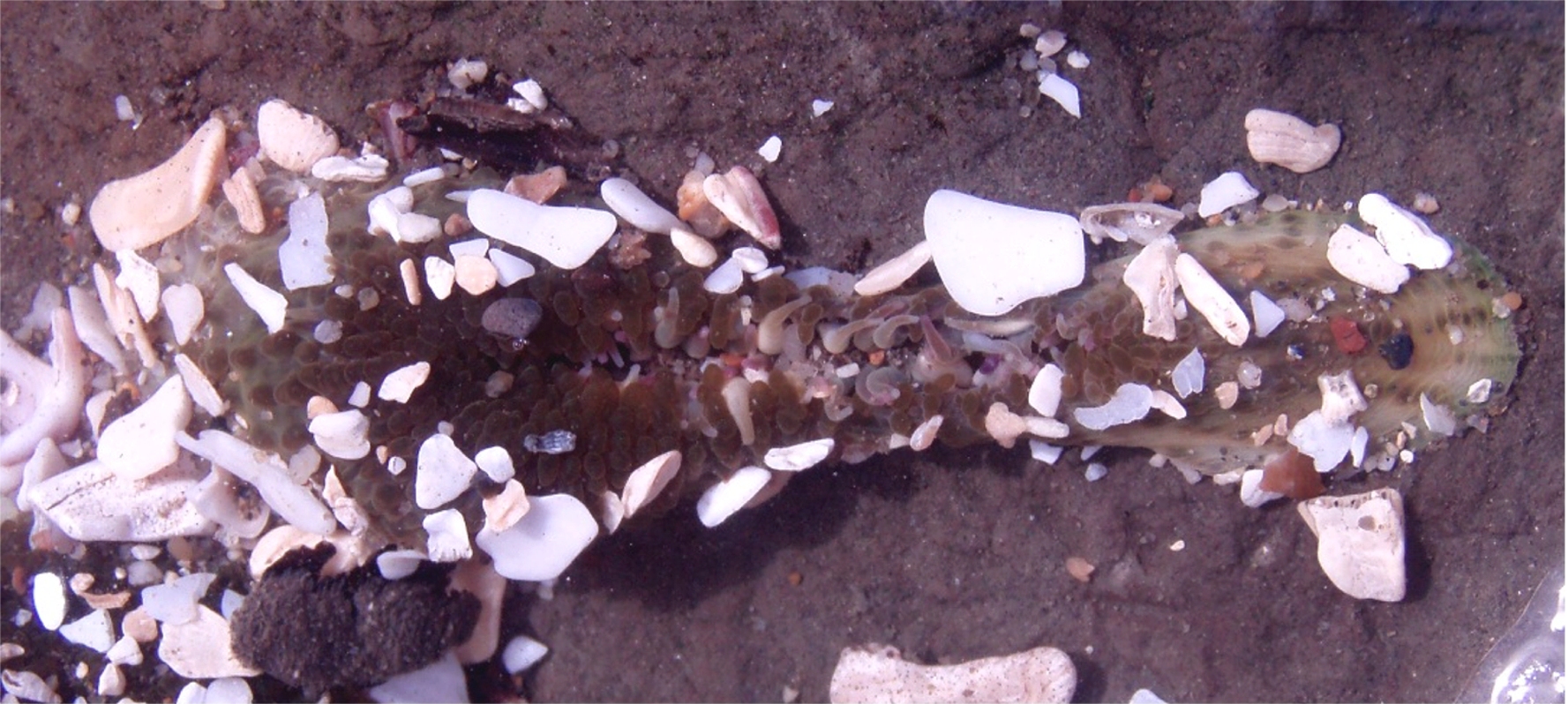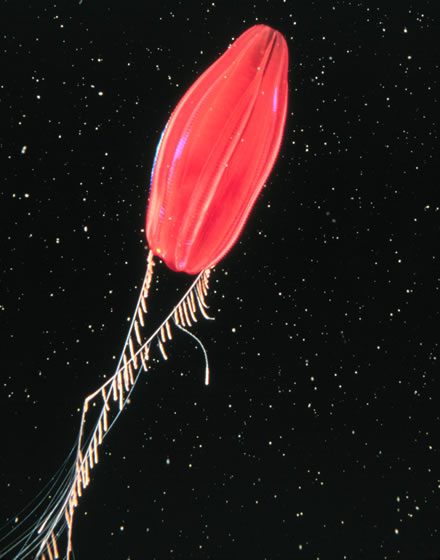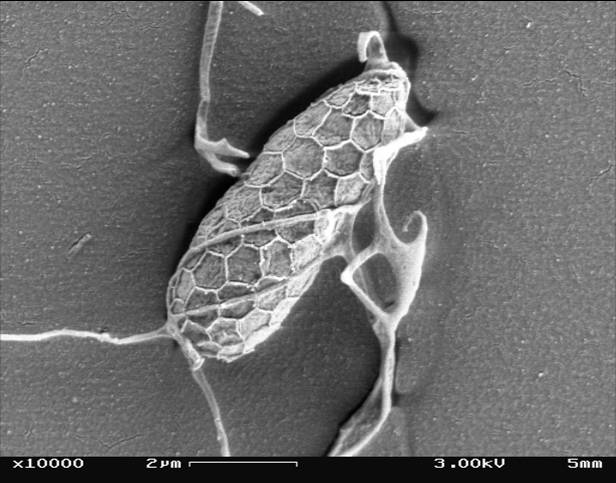|
Zoochlorellae
Zoochlorella (: zoochlorellae) is a colloquial term for any green algae that lives symbiotically within the body of an aquatic invertebrate animal or a protozoan. Classification Zoochlorellae are various genera belonging to the classes Chlorophyceae and Trebouxiophyceae, historically treated as a single genus ''Zoochlorella'' due to their similar appearance to the genus ''Chlorella''. However, this genus was found to be polyphyletic through molecular phylogeny, and currently considered '' nomen rejiciendum''. As a consequence, the two species belonging to this obsolete genus have been transferred to different green algal genera. * ''Zoochlorella conductrix'' → ''Micractinium'' * ''Zoochlorella parasitica'' → '' Choricystis'' Origin The analogy between zoochlorellae and chloroplasts was used by the botanist Konstantin Mereschkowski in 1905 to argue about the symbiotic origin of chloroplasts (then called 'chromatophores', a term used for completely different structur ... [...More Info...] [...Related Items...] OR: [Wikipedia] [Google] [Baidu] |
Anthopleura Elegantissima
The aggregating anemone (''Anthopleura elegantissima''), or clonal anemone, is the most abundant species of sea anemone found on rocky, tide swept shores along the Pacific coast of North America. This cnidarian hosts endosymbiotic algae called zooxanthellae that contribute substantially to primary productivity in the intertidal zone. The aggregating anemone has become a model organism for the study of temperate cnidarian-algal symbioses. They are most well known for the ability to clone themselves. Description The polyps of the aggregating anemone reach up to eight cm across the oral disk with approximately 100 tentacles in three or four rows around the margins of the oral disk. Most are olive to bright green (depending on the species of algal symbionts present) with tentacles tipped in pink. Individuals that live in microhabitats that are deficient in photosynthetically active radiation (PAR), such as under docks or in caves, lack symbionts and are pale yellow to white in colo ... [...More Info...] [...Related Items...] OR: [Wikipedia] [Google] [Baidu] |
Green Algae
The green algae (: green alga) are a group of chlorophyll-containing autotrophic eukaryotes consisting of the phylum Prasinodermophyta and its unnamed sister group that contains the Chlorophyta and Charophyta/ Streptophyta. The land plants ( Embryophytes) have emerged deep within the charophytes as a sister of the Zygnematophyceae. Since the realization that the Embryophytes emerged within the green algae, some authors are starting to include them. The completed clade that includes both green algae and embryophytes is monophyletic and is referred to as the clade Viridiplantae and as the kingdom Plantae. The green algae include unicellular and colonial flagellates, most with two flagella per cell, as well as various colonial, coccoid (spherical), and filamentous forms, and macroscopic, multicellular seaweeds. There are about 22,000 species of green algae, many of which live most of their lives as single cells, while other species form coenobia (colonies), long filaments ... [...More Info...] [...Related Items...] OR: [Wikipedia] [Google] [Baidu] |
Tentacle
In zoology, a tentacle is a flexible, mobile, and elongated organ present in some species of animals, most of them invertebrates. In animal anatomy, tentacles usually occur in one or more pairs. Anatomically, the tentacles of animals work mainly like muscular hydrostats. Most forms of tentacles are used for grasping and feeding. Many are sensory organs, variously receptive to touch, vision, or to the smell or taste of particular foods or threats. Examples of such tentacles are the eyestalks of various kinds of snails. Some kinds of tentacles have both sensory and manipulatory functions. A tentacle is similar to a cirrus, but a cirrus is an organ that usually lacks the tentacle's strength, size, flexibility, or sensitivity. A nautilus has cirri, but a squid has tentacles. Invertebrates Molluscs Many molluscs have tentacles of one form or another. The most familiar are those of the pulmonate land snails, which usually have two sets of tentacles on the head: when ext ... [...More Info...] [...Related Items...] OR: [Wikipedia] [Google] [Baidu] |
Stramenopiles
The stramenopiles, also called heterokonts, are Protist, protists distinguished by the presence of stiff tripartite external hairs. In most species, the hairs are attached to flagella, in some they are attached to other areas of the cellular surface, and in some they have been secondarily lost (in which case relatedness to stramenopile ancestors is evident from other shared cytological features or from genetic similarity). Stramenopiles represent one of the three major clades in the SAR supergroup, SAR Supergroup (biology), supergroup, along with Alveolate, Alveolata and Rhizaria. Stramenopiles are Eukaryote, eukaryotes; most are single-celled, but some are multicellular including some large seaweeds, the brown algae. The group includes a variety of algal protists, heterotrophic flagellates, opalines and closely related proteromonad flagellates (all Endosymbiont, endobionts in other organisms); the actinophryid Heliozoa, and oomycetes. The tripartite hairs characteristic of the ... [...More Info...] [...Related Items...] OR: [Wikipedia] [Google] [Baidu] |
Labyrinthulomycetes
Labyrinthulomycetes (ICNafp) or Labyrinthulea (ICZN) is a class of protists that produce a network of filaments or tubes, which serve as tracks for the cells to glide along and absorb nutrients for them. The two main groups are the labyrinthulids (or slime nets) and thraustochytrids. They are mostly marine, commonly found as parasites on algae and seagrasses or as decomposers on dead plant material. They also include some parasites of marine invertebrates and mixotrophic species that live in a symbiotic relationship with zoochlorella. Characteristics Although they are outside the cells, the filaments of Labyrinthulomycetes are surrounded by a membrane. They are formed and connected with the cytoplasm by a unique organelle called a sagenogen or bothrosome. The cells are uninucleated and typically ovoid, and move back and forth along the amorphous network at speeds varying from 5-150 μm per minute. Among the labyrinthulids, the cells are enclosed within the tubes, and ... [...More Info...] [...Related Items...] OR: [Wikipedia] [Google] [Baidu] |
Amoebozoa
Amoebozoa is a major Taxonomy (biology), taxonomic group containing about 2,400 described species of Amoeba, amoeboid protists, often possessing blunt, fingerlike, Pseudopod#Morphology, lobose pseudopods and tubular mitochondrial cristae. In traditional classification schemes, Amoebozoa is usually ranked as a phylum within either the kingdom (biology), kingdom Protista or the kingdom Protozoa. In the classification favored by the International Society of Protistologists, it is retained as an unranked "supergroup (biology), supergroup" within Eukaryota. Molecular genetics, Molecular genetic analysis supports Amoebozoa as a monophyletic clade. Modern studies of eukaryotic phylogenetic trees identify it as the sister group to Opisthokonta, another major clade which contains both fungi and animals as well as several other clades comprising some 300 species of unicellular eukaryotes. Amoebozoa and Opisthokonta are sometimes grouped together in a high-level taxon, named Amorphea. Amoeboz ... [...More Info...] [...Related Items...] OR: [Wikipedia] [Google] [Baidu] |
Arcellinida
Arcellinid testate amoebae or Arcellinida,http://www.microscopy-uk.org.uk/mag/artjun03/gsamoebae.html Testate amoebae, peat bogs and past climates. accessed 16 march 2007 Arcellacean or lobose testate amoebae are single-celled protists partially enclosed in a simple test (shell). Arcellinid testate amoebae are commonly found in soils, leaf litter, peat bogs and near/in fresh water. They use their pseudopodia, a temporary cell extension, for moving and taking in food. Like most amoebae, they are generally believed to reproduce asexually via binary fission. However a recent review suggests that sexual recombination may be the rule rather than the exception in amoeboid protists in general, including the Arcellinid testate amoebae. Morphology Arcellinida always have a shell or test. The tests lie outside the cell membrane and consist of organic or mineral materials that are either secreted or incorporate external particles. The test has a single main opening. Simple tests are m ... [...More Info...] [...Related Items...] OR: [Wikipedia] [Google] [Baidu] |
Heleopera Sphagni
''Heleopera'' () is a genus of testate amoebae belonging to the order Arcellinida. It is the sole genus within family Heleoperidae and infraorder Volnustoma, which in turn belong to the suborder Glutinoconcha. It is characterized by a conspicuous slit-like test aperture. Description ''Heleopera'' is a genus of testate amoebae, a type of unicellular amoeboid protists that are enclosed in a shell known as the test (biology), test. In particular, it belongs to the order Arcellinida, which includes testate amoebae with lobosa, lobose (round, blunt-ended) pseudopods. The genus is characterized by an ovoid, laterally compressed test composed of a cancellated chitinoid membrane with a reticulate appearance of mostly dotted lines, often incorporating particles of sand. The test opening, or 'mouth', is large, elliptical and has a terminal position. Through this opening, the organism extends numerous digitiform pseudopods. The conspicuous slit-like (laterally compressed) terminal opening ... [...More Info...] [...Related Items...] OR: [Wikipedia] [Google] [Baidu] |
Hyalosphenia Papilio
Arcellinid testate amoebae or Arcellinida,http://www.microscopy-uk.org.uk/mag/artjun03/gsamoebae.html Testate amoebae, peat bogs and past climates. accessed 16 march 2007 Arcellacean or lobose testate amoebae are single-celled protists partially enclosed in a simple test (shell). Arcellinid testate amoebae are commonly found in soils, leaf litter, peat bogs and near/in fresh water. They use their pseudopodia, a temporary cell extension, for moving and taking in food. Like most amoebae, they are generally believed to reproduce asexually via binary fission. However a recent review suggests that sexual recombination may be the rule rather than the exception in amoeboid protists in general, including the Arcellinid testate amoebae. Morphology Arcellinida always have a shell or test. The tests lie outside the cell membrane and consist of organic or mineral materials that are either secreted or incorporate external particles. The test has a single main opening. Simple tests are made ... [...More Info...] [...Related Items...] OR: [Wikipedia] [Google] [Baidu] |
Mixotrophy
A mixotroph is an organism that uses a mix of different sources of energy and carbon, instead of having a single trophic mode, on the continuum from complete autotrophy to complete heterotrophy. It is estimated that mixotrophs comprise more than half of all microscopic plankton. There are two types of eukaryotic mixotrophs. There are those with their own chloroplasts – including those with endosymbionts providing the chloroplasts. And there are those that acquire them through kleptoplasty, or through symbiotic associations with prey, or through 'enslavement' of the prey's organelles.Leles S G et al, (2017). Oceanic protists with different forms of acquired phototrophy display contrasting biogeographies and abundance, ''Proceedings of the Royal Society B: Biological Sciences''. Possible combinations are photo- and chemotrophy, litho- and organotrophy ( osmotrophy, phagotrophy and myzocytosis), auto- and heterotrophy or other combinations of these. Mixotrophs can be either eu ... [...More Info...] [...Related Items...] OR: [Wikipedia] [Google] [Baidu] |







